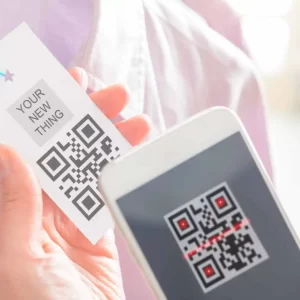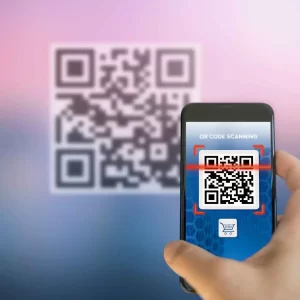A QR code,
Or Quick Response code, is a two-dimensional barcode that has gained widespread popularity due to its versatility and ease of use difference between dynamic and static qr code. Composed of black squares arranged on a white background, QR codes can store a significant amount of information, including URLs, text, contact details, payment information, and more. create batch qr codes dynamic
They are easily scanned by smartphones or QR code readers, allowing users to quickly access the encoded information or trigger specific actions. QR codes find applications in various industries, such as marketing, ticketing, inventory management, and contactless payments.
With their ability to store and retrieve data efficiently, QR codes have become an integral part of modern technology, providing a convenient and efficient way to connect the physical and digital worlds.
What is a Dynamic QR code
A dynamic QR code is a type of QR code that allows for the modification of encoded data even after the QR code is generated. Unlike static QR codes that contain fixed information, dynamic QR codes offer flexibility by enabling real-time updates to the linked content.
They are managed through online platforms or services, allowing users to edit and modify the data associated with the QR code. This versatility makes dynamic QR codes ideal for applications that require dynamic content, such as marketing campaigns, event registrations, and inventory management.
With dynamic QR codes, you can ensure that recipients always access the most up-to-date information when they scan the code, difference between dynamic and static qr code making them a valuable tool for interactive and real-time engagement.

Dynamic QR code
Free dynamic qr code is a type of QR code that allows the encoded information to be modified or updated after the QR code is generated. Unlike static QR codes, which contain fixed data, dynamic QR codes provide greater flexibility and convenience difference between dynamic and static qr code. Here are some key points about dynamic QR codes:
- Data Modification: With dynamic QR codes, you can change the encoded data without needing to generate a new QR code. This allows for updates or modifications to the linked content or information.
- Versatile Usage: Dynamic QR codes are commonly used in scenarios where the encoded data may need to be updated periodically. For example, they are useful for promotional campaigns, event registrations, product information, or time-sensitive offers.
- Management Platforms: Dynamic QR codes are often managed through online platforms or services. These platforms provide a user-friendly interface to create, track, and update QR codes, as well as access analytics and statistics related to scan activity.
- Linking to Online Content: Dynamic QR codes can be programmed to link to websites, landing pages, online forms, or digital documents. This allows for the redirection of users to the most up-to-date information, enabling a seamless user experience difference between dynamic and static qr code.
- Analytics and Tracking: Many dynamic QR code platforms offer analytics features, allowing you to monitor the scan activity, location, and demographics of users. This data can be valuable for assessing the effectiveness of your QR code campaigns.
- Customization and Design: Dynamic QR codes often offer customization options, allowing you to customize the appearance of the QR code with your preferred colors, logo, or branding elements. This helps maintain consistency with your overall visual identity.
- Increased Scanning Reliability: Dynamic QR codes employ techniques to enhance scanning reliability, such as error correction mechanisms. This ensures that even if a portion of the code is damaged or obscured, it can still be successfully scanned and decoded.
Dynamic QR codes provide flexibility and convenience in managing and updating encoded data, making them suitable for dynamic content and time-sensitive information difference between dynamic and static qr code. Whether it’s updating promotional offers, event details, or contact information, dynamic QR codes offer an efficient way to keep your audience engaged and informed.

Static vs Dynamic QR code
Static vs Dynamic QR code: are two different types of QR codes that serve different purposes. Here’s a comparison between static and dynamic QR codes:
Static QR Codes:
- Fixed Data: Static QR codes contain fixed information that is embedded at the time of creation. The encoded data remains the same until the QR code is regenerated.
- Limited Functionality: Static QR codes are ideal for scenarios where the encoded data does not need to be changed frequently. They are commonly used for basic information like website URLs, contact details, or simple text.
- Simple Creation: Static QR codes can be easily created using various online QR code generators or software tools. Once generated, they can be downloaded and shared for scanning.
- No Management Required: Since the data is fixed, there is no need for ongoing management or updates difference between dynamic and static qr code. Once the QR code is generated, it can be printed or shared without the need for further maintenance.
Dynamic QR Codes:
- Data Modification: Dynamic QR codes allow for the modification or update of the encoded information after the QR code is generated. The encoded data can be changed without regenerating a new QR code.
- Versatile Usage: dynamic qr code generator are useful in situations where the encoded information needs to be updated regularly or where more complex functionality is required. They are commonly used for marketing campaigns, event registrations, and tracking purposes.
- Online Management: Dynamic QR codes are typically managed through online platforms or services difference between dynamic and static qr code. These platforms offer features such as data editing, analytics, tracking, and the ability to modify the linked content without changing the QR code itself.
- Greater Flexibility: Dynamic QR codes provide flexibility in terms of data updates, allowing you to keep the information relevant and up to date. You can change the linked content, redirect URLs, or switch to different landing pages as needed.
- Enhanced Tracking and Analytics: Dynamic QR code platforms often provide advanced tracking and analytics capabilities. You can monitor scan activity, location, and other metrics to evaluate the effectiveness of your QR code campaigns.
- More Complex Setup: Dynamic QR codes may require initial setup and integration with a management platform or API. This adds a layer of complexity compared to static QR codes.
The choice between static and dynamic QR codes depends on your specific use case and requirements difference between dynamic and static qr code. If you have static information that doesn’t change frequently, a static QR code may suffice. On the other hand, if you need to update or manage the encoded data dynamically, or if you require advanced tracking and analytics, a dynamic QR code is more suitable.
